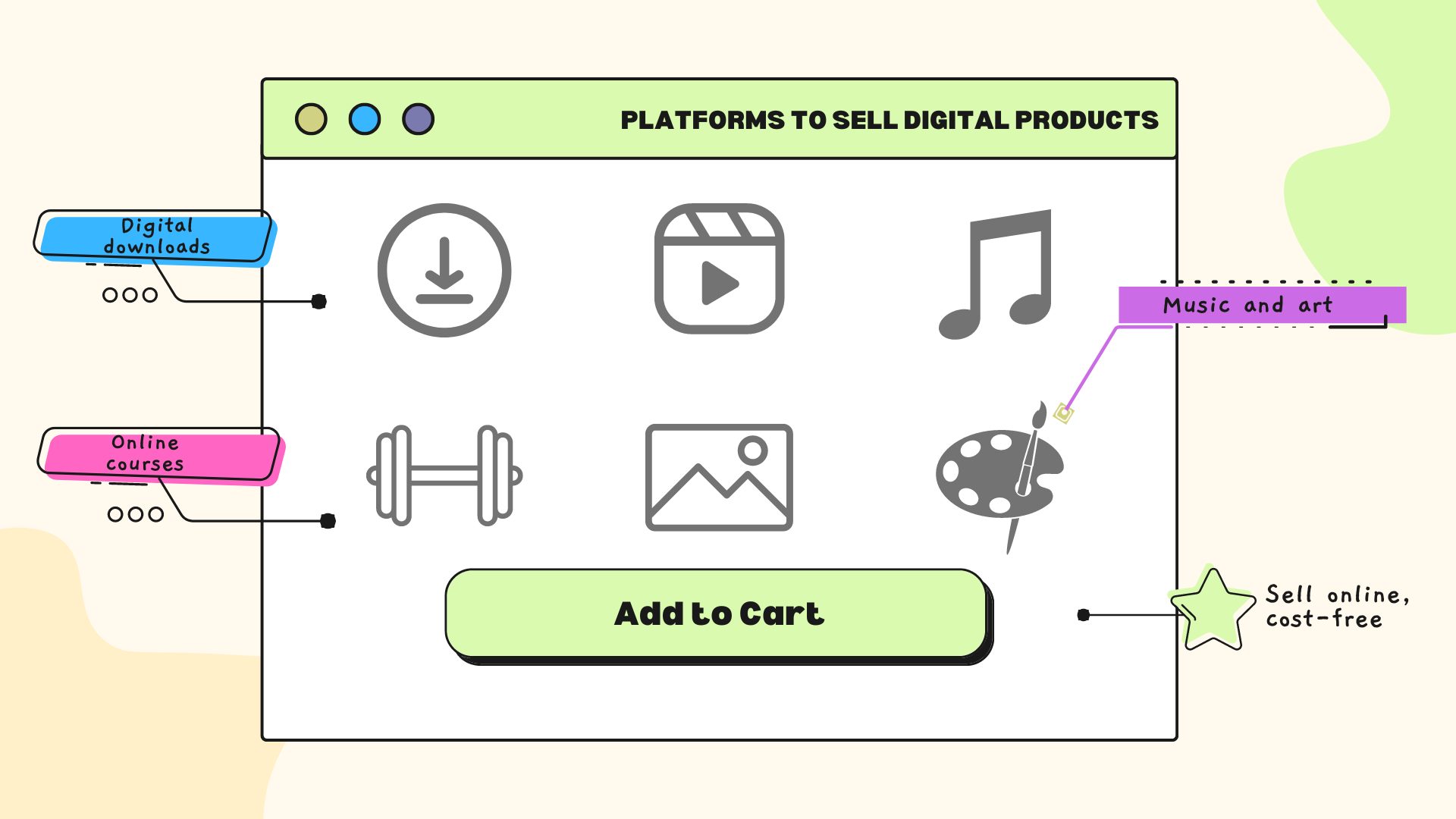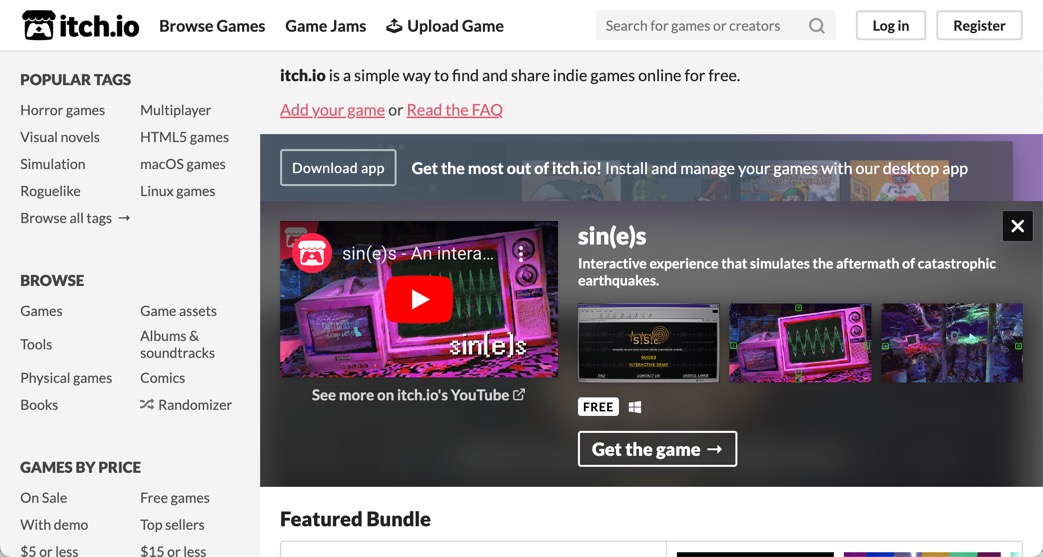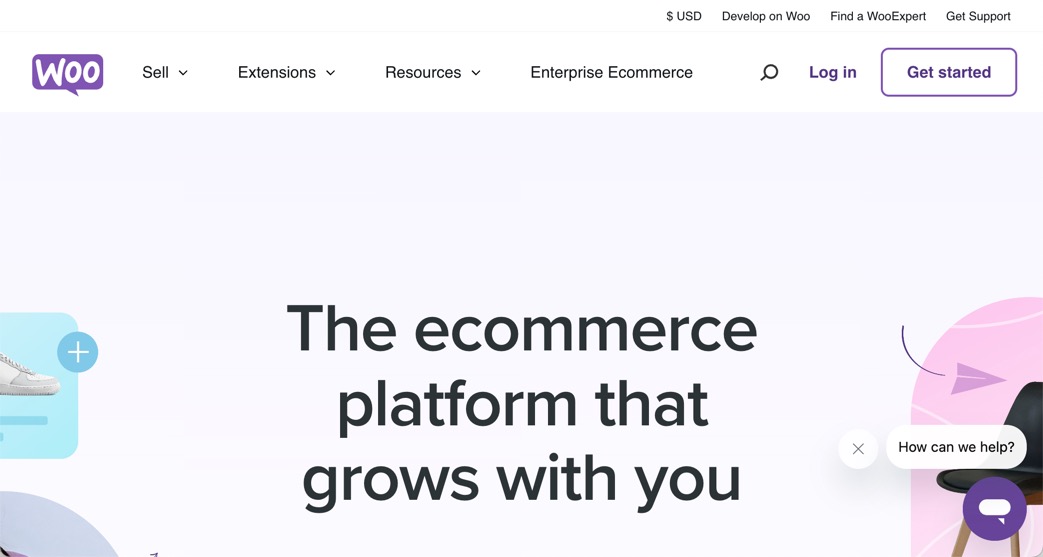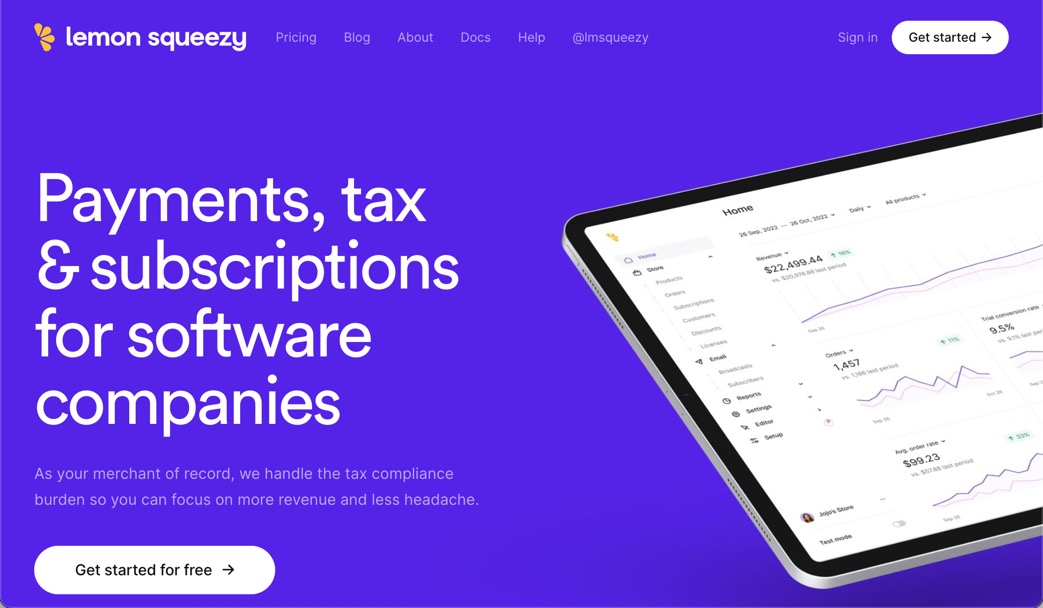
When you’re brimming with digital creativity, finding the best platform to sell digital products is like finding the perfect stage for your grand performance. The good news is that there’s no shortage of options to choose from regardless of what your needs and priorities are.
This article will explore ten outstanding cost-free platforms to simplify your decision-making process and help you pick the most suitable home for your digital goods.
Table of Contents
Factors to Consider When Choosing a Platform to Sell Digital Products
Your decision about where to sell digital downloads can greatly influence your success in the digital marketplace.
Some might suggest casting a wide net, selling on multiple platforms at once. However, managing multiple storefronts can be time-consuming and complex. It requires syncing inventories, juggling different user interfaces, and dedicating time to understanding the nuances of each site. This strategy might work for some, but for many, focusing on one platform at a time could yield better results.

Choosing the right platform from the get-go, therefore, becomes critical. Here are some key considerations to help you make the right choice, and they’re the same factors we focused on when curating our top picks for the best platform to sell digital products:
- 😌 Ease of use: Even if you consider yourself to be a tech-savvy person, you should still prioritize websites that are easy to use to avoid daily headaches caused by poor usability.
- 🔧 Maintenance difficulty: Look for a platform that requires minimal upkeep. Your time should be spent creating and selling your digital goods, not troubleshooting platform issues.
- 📦 Customizability: Your platform should allow you to modify and personalize your online storefront, reflecting your brand’s identity. This includes customization of product pages, images, and the overall visual theme.
- ☁️ Scalability: As your digital business grows, your platform should be able to accommodate that growth both in terms of the size of your product line and the amount of traffic you receive.
- 💸 Fees: While all marketplaces for digital products featured in this article cost nothing at all to use, it’s important to note that there may be additional fees associated with certain transactions or services, such as when withdrawing money.
- 💳 Payment options: Check that the platform provides reliable payment processing options that suit you and your customers. You certainly don’t want to miss out on a potential sale because your platform doesn’t support a buyer’s preferred payment method.
- 🧑💻 Community and support: A platform with robust community support can provide invaluable advice and tips. Similarly, responsive official customer support channels can go a long way in helping you troubleshoot technical issues.
- 👩🏽🦳 Audience: Ultimately, the best website to sell digital products is the one that’s trusted by your audience. Some platforms already have bustling communities of buyers interested in your type of digital goods, and those can certainly give you a nice initial boost.
Remember, the goal isn’t just to find a free platform to sell digital products, but to find the one that perfectly suits your needs and can help you ensure your digital journey is successful.
10 Best Free Platforms to Sell Digital Products
Now that we’ve talked about what to look for in a platform, let’s dive right into the main part: our overview of the top 10 best marketplaces for digital products.
| Platform | Pricing | Fees | Product Types |
| Gumroad | Free | 10% flat fee on every sale | The best platform to sell digital downloads. |
| Shopify | From $24 per month after the initial free trial period | There are no transaction fees for stores using Shopify Payments. | Suitable for all kinds of digital products |
| Etsy | First 40 items are free then $0.20 listing fee per item | 6.5% transaction fee | Digital files, arts, crafts, and more |
| Patreon | Free | 5% to 12% of successfully processed payments | Exclusive digital content, including arts, podcasts, videos |
| Itch.io | Free (optional donation to support the platform) | Set your own revenue share rate, default is 10% to Itch.io | Indie games, game assets, music, comics |
| WordPress with WooCommerce | Free (excluding hosting and domain costs) | Varies based on payment gateway used | Any digital and physical products |
| Substack | Free | 10% of subscription revenue | Paid newsletters |
| Envato Market | Free | Non-Exclusive: 55%, Exclusive: 12.5%–37.5% | Digital assets, including themes, audio, video, photos |
| Udemy | Free | 3% or 63% depending on how the content is purchased | Online courses in various topics |
| Lemon Squeezy | Free to start | 5% free + 50¢ per transaction | SaaS products, digital subscriptions |
1. Gumroad
🏆 Best for: Those who know how to get their products in front of potential buyers on their own.

Overview:
Gumroad, a San Francisco-based company, has been helping creators sell everything from ebooks to software directly to their audience since 2011. If you’re a digital content creator with an existing following or know how to market your products effectively, Gumroad might be the best place to sell digital downloads for you thanks to its powerful but simple features that let creators be creators.
- Straightforward pricing (10% flat fee)
- Easy-to-use storefront builder
- Payments are prompt
- Many payment integrations
- Multi-currency and VAT support
- License key generation for software purchases
- Gumroad doesn’t drive traffic
Payout methods: As a seller, you can get paid via PayPal, direct deposit, or Stripe.
Success stories:
- This redditor has made almost $80,000 in profits through Gumroad.
- Ryan Trincieri made $24,500 by selling digital products on Gumroad in just 21 days.
2. Shopify
🏆 Best for: Those looking to grow their digital business into a fully-fledged eCommerce store.

Overview:
According to one analysis, Shopify has 28% of the total eCommerce platform marketshare, making it a force to be reckoned with. One of the main reasons behind Spotify’s popularity is its ability to help businesses of all sizes scale and grow with relative ease by facilitating everything from the initial setup of an online store to the implementation of advanced marketing strategies.
- Virtually infinite scalability
- Highly customizable
- Can be used to sell any digital product
- Easy to set up and use
- Many third-party integrations
- Free for only 3 days
- Shopify doesn’t drive traffic
Payout methods: The funds from your sales directly into your designated checking account.
Success stories:
- This article reveals how Beardbrand used Shopify to build a $40,000 per month eCommerce business.
- Island Olive Oil Company is a boutique Hawaii-based business that sells olive oil on Shopify.
3. Etsy
🏆 Best for: Those who would like to present their digital creations to a large, established audience.

Overview:
Etsy is a popular marketplace synonymous with unique, creative goods. While many know it as a platform for craft supplies, home items, accessories, art, and more, it also offers an excellent opportunity to sell ready-made digital files. The best thing about Etsy is the fact that it provides access to a large established audience, making it easy for sellers who are just starting out to sell their first product.
- Access to a large global audience
- Sellers can personalize their storefronts
- Built-in analytics tools
- You can use Etsy Ads to advertise your products
- Fees associated with each product listing
- The platform has held sellers hostage in the past
Payout methods: You get direct deposits to your bank account.
Success stories:
- Laura Schmidt has used Etsy to create a six-figure business.
- Dana Muskat has created a successful eshop with soft toys on Etsy.
4. Patreon
🏆 Best for: Content creators looking to foster a loyal community and offer exclusive content.

Overview:
Patreon is a unique platform that enables creators to earn a monthly income by offering exclusive rewards to their subscribers or “patrons”. This makes it ideal for those producing regular content, such as digital artists, podcasters, or musicians. Patreon also provides the opportunity to list products for sale, from individual vlogs to digital prints, and it integrates with many third-party tools and apps that greatly enhance its capabilities, such as Sellfy.
- Excellent for building a dedicated community
- Facilitates recurring income
- Suitable for various types of digital content
- Mature content is allowed
- Fairly high and complicated fees
- Not ideal for one-time sellers
Payout methods: You have the choice to pay out your balance to a bank account, Payoneer, or PayPal.
Success stories:
- CGP Grey has over 10,000 patrons who support the YouTube channel’s educational video content.
- Tefler earns more than $7,000 per chapter of their sci-fi stories.
5. Itch.io
🏆 Best for: Indie game developers and other digital creatives looking for a community to share and sell their creations.

Overview:
Itch.io has swiftly grown into a beloved hub for indie developers. Known for its user-friendly features and a strong sense of community, the platform hosts video games, game assets, music, and comics, and other digital products. Developers flock to the platform because it lets them run their games in the browser, making it easy for players to enjoy them while also offering a layer of protection against software pirates.
- Many popular video game engines are supported
- Games can be played directly on itch.io
- Creators can design custom landing pages
- Extensive analytics for tracking views, downloads, and purchases
- Suitable mainly for game-related products
- A bit of a learning curve
Payout methods: You can be paid via PayPal or Payoneer.
Success stories:
- Doki Doki Literature Club started on itch.io before it ever appeared on Steam.
- FRVR, a video game development company, has increased its daily active users to 2 million thanks to itch.io.
6. WordPress with WooCommerce
🏆 Best for: Small to large-sized online merchants seeking customization and control over their online store.

Overview:
As an open-source eCommerce plugin for WordPress, the wildly popular content management system behind many of the world’s most popular websites, WooCommerce is an excellent choice for tech-savvy digital merchants who don’t want to depend on any third parties. Of course, it does require a lot more effort to get WooCommerce up and running compared with such fully managed alternatives as Shopify, but the effort can be worth it.
- Completely free and open source
- High level of customization
- Scalable, making it suitable for both small and large businesses
- Integration with WordPress makes it perfect for those already using the platform
- Large community and a lot of documentation available
- Requires a certain level of tech-savviness to fully exploit its potential
- Many popular extensions cost money
Payout methods: Can be made to work with just about any payment provider.
Success stories:
- Tiny Wood Stove is running a million-dollar business on WooCommerce.
- For Thomas’s Trendy Socks WordPress and WooCommerce were an easy choice.
7. Substack
🏆 Best for: Independent writers and journalists seeking to monetize their newsletters.

Overview:
Substack, founded in 2017, has rapidly emerged as a hub for subscription newsletters. It strips away the complexities of setting up a payment system or designing a website, letting writers focus on what they do best: writing. With an emphasis on direct earnings from subscribers, Substack offers a model that greatly benefits writers with a loyal reader base.
- Easy to set up and manage newsletters
- Direct earnings from subscribers
- Total control over content and subscriber list
- Ability to choose between free or paid posts
- Substack doesn’t drive much traffic (unlike Medium, for example)
- Requires a loyal subscriber base for substantial earnings
Payout methods: Payouts are made to your bank account.
Success stories:
- Edwin Dorsey was earning more than $300,000 annually on Substack after just a year.
- Six months after starting a Substack, Bari Weiss has more than 90,000 readers.
8. Envato Market
🏆 Best for: Quality-focused creatives that sell everything from WordPress themes to stock audio clips.

Overview:
Envato Market is a world-leading online community where creatives can offer their digital products to a huge number of potential buyers from around the world. The platform describes itself as a place for everything digital, and that’s certainly true. From graphic templates, website themes, software scripts to photos, video, audio, or even 3D models, Envato has you covered.
- Houses a broad range of product categories
- Offers an option to go exclusive and earn more
- Provides a variety of earning opportunities (including affiliates)
- Fosters a sense of community through its forums
- Can be extremely competitive
- Envato takes a large cut of every sale
Payout methods: Author payments can be made via PayPal, Payoneer, or SWIFT bank transfer
Success stories:
- The people behind Ninja Team are selling some of the world’s most popular WordPress plugins and themes on Envato.
- Chris Skipper, also known as HushSounds, has successfully used Envato to break the monotony of his normal 9-5 job.
9. Udemy
🏆 Best for: Educators and professionals looking to share their expertise and earn income.

Overview:
If you’re an expert in your field and have a knack for teaching, Udemy can be an excellent place to monetize your knowledge. With over 62 million learners across 180+ countries, this educational platform offers a vibrant platform to sell your digital courses in 75+ languages. Udemy’s most popular instructors have not only garnered global recognition and influence but have also built substantial income streams.
- Access to a global audience
- Control over course content and pricing
- Opportunity to sell in multiple languages
- Enterprise customers include over 50% of the Fortune 100
- Competitive marketplace
- Udemy takes a significant share of the course fee
- Strict rules against personal promotion
Payout methods: PayPal, Payoneer, and direct deposit (U.S. only) are the only supported payout methods.
Success stories:
- Vasco Cavalheiro made over $700,000 on Udemy.
- Nick Walter made more than $60,000 in 30 days by selling a $199 iPhone app development course.
10. Lemon Squeezy
🏆 Best for: SaaS businesses looking for a comprehensive platform to handle payments, subscriptions, global tax compliance, fraud prevention, and more.

Overview:
Lemon Squeezy offers a comprehensive solution for running your SaaS business. With their easy-to-use platform, they manage everything from payments and subscriptions to global tax compliance and fraud prevention. Lemon Squeezy even serves as your merchant of record, handling the legal aspects of payment processing and merchant fees, making your digital business operations truly “easy peasy.”
- Multi-currency support, perfect for a global audience
- AI-driven fraud prevention
- Offers no-code and API solutions
- Instantly sell to 135+ countries with zero setup
- Platform may be too comprehensive for businesses with simpler needs
- Not as mature as other platforms on this list
Payout methods:
Success stories:
- James McDonald launched Iconic using Lemon Squeezy.
- UiPress relies on Lemon Squeezy for license key management and recurring payments.
Conclusion
Selling digital products has never been easier. The platforms listed in this article provide you with a starting point, but remember, the “best” platform truly depends on your individual needs and the type of digital goods you are selling.
Whether you choose to sell through a giant like Shopify, a creative marketplace like Etsy, or your own WordPress- and WooCommerce-powered website, always ensure the platform aligns with your business model, target audience, and personal preferences.
Platforms for Selling Digital Products: FAQ
To sell your digital products:
- Identify what digital products you want to sell.
- Choose the best platform to sell digital products.
- Create high-quality, attractive product listings.
- Set competitive prices.
- Promote your products online to attract potential buyers.






